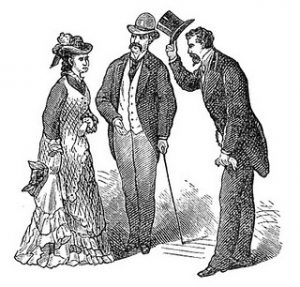 I love to “talk shop” with other writers. I learn so much about my own process and my weaknesses because it’s always easier to see the flaws – and the strengths! – in someone else’s work. Recently, I had the mirrored experience of serving as a beta reader for another writer’s novel and receiving similar feedback on one of my own. The thematic similarities and differences between the two very early versions of the stories are irrelevant. What fascinated me was that we used dialog in diametrically opposed ways in our story construction: my friend’s rough draft read like a screenplay, and mine had comparatively little conversation. We’ll both end up with balanced manuscripts, but we’ve started from opposite places.
I love to “talk shop” with other writers. I learn so much about my own process and my weaknesses because it’s always easier to see the flaws – and the strengths! – in someone else’s work. Recently, I had the mirrored experience of serving as a beta reader for another writer’s novel and receiving similar feedback on one of my own. The thematic similarities and differences between the two very early versions of the stories are irrelevant. What fascinated me was that we used dialog in diametrically opposed ways in our story construction: my friend’s rough draft read like a screenplay, and mine had comparatively little conversation. We’ll both end up with balanced manuscripts, but we’ve started from opposite places.
Dialog, which is the transcription of what each character says, rather than a summary in narrative, is one of a writer’s most powerful tools. It’s also one that’s easy to abuse, either by using it too much or too little, or asking it to perform functions in the story that it’s not well-suited for. Certainly, it’s possible to tell a story entirely in dialog form, just as it’s possible to write a story entirely in narrative with zero dialog. Most stories fall in the comfortable middle zone, especially if they involve more than one character capable of speech.
When we write prose stories, we can choose to show action in a variety of ways, narrative being one, dialog another. Dialog isn’t very good for showing events at a distance; characters can be discussing those events or relaying them, but both are “off the scene” and hence have less immediacy. On the other hand, if the emphasis is on the reaction of the characters to those events, dialog can be of immense help. One of the strengths of dialog is that if skillfully handled, it can give us a window into a character’s inner state without being in that character’s head. Screenplay writers know this and use dialog to reveal character, to heighten and resolve tension, to create conflict, and to further the plot.
Which brings me to one of the things I saw in my friend’s manuscript. She came to her story with “screenwriter’s mind.” She used dialog not only to convey the content of conversations (relationship building, changing, exchange of information between characters, etc.) but to sketch out the action that she would later fill in with narrative. I’m a bit in awe of this since what little I know of screenplay writing has thoroughly impressed me with what a high-wire act it is to use only dialog and highly abbreviated descriptions of scene and action to tell a story.
I, on the other hand, used bits of narrative as shorthand for the conversations that will be developed in revision. If anything, my rough draft was too focused on the inside on my protagonist’s head, not what she was doing or saying. One of the consequences was that other characters are suggested rather than developed, whereas in my friend’s draft, her extensive use of dialog has done much of this important work.
There isn’t any one right way to weave dialog into a story, any more than there is one single right way to write. The more options we have, the more tools we have in that magic box of tricks, the better we will be at telling a range of stories. So here’s a challenge for your next story project. If you’re like my friend, a writer who uses dialog heavily to set the major blocks of her story, challenge yourself to write that first draft with as little dialog as you can. Can you do it with none? What are the circumstances under which you absolutely have to put it in?
If you’re like me, a writer who puts in just a bit here and there, challenge yourself to use dialog to create the backbone of the plot, to introduce and reveal character, to heighten and resolve tension, without using your normal narrative techniques.
My guess is that either way, the process will be both uncomfortable and revealing. Have you been relying on dialog as a preferred and therefore easy way of transcribing the movie between your ears? Or have you regarded it as a frill, lightweight chit-chat instead of an essential foundation of the story?
The good news is that no matter where we start, whatever our natural propensities and habit, it really doesn’t matter what order we weave in and shift around the elements of narrative and dialog. What matters is that final draft when everything has come into balance and the story shines!
